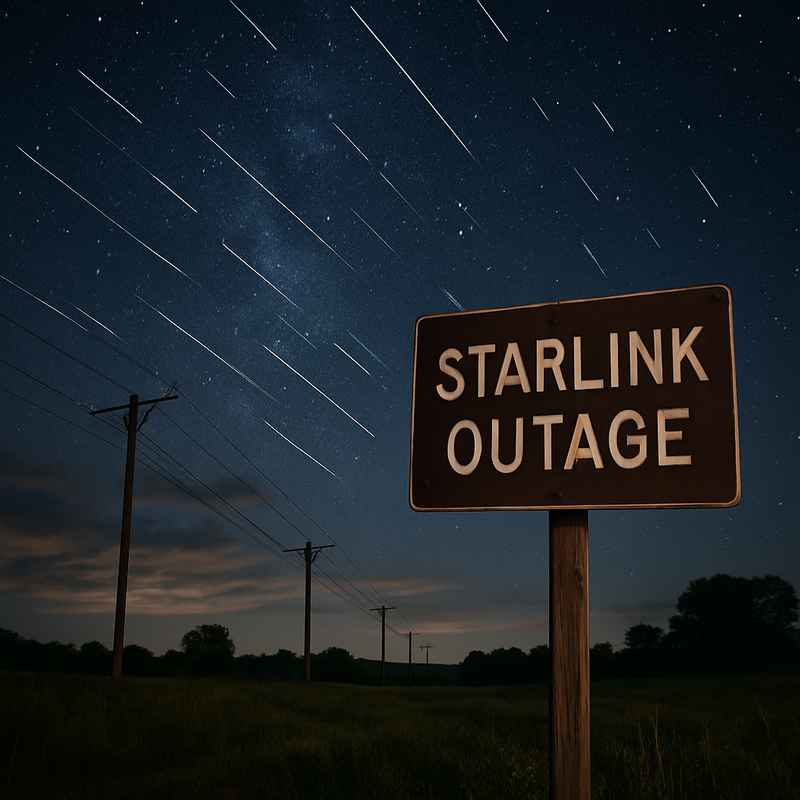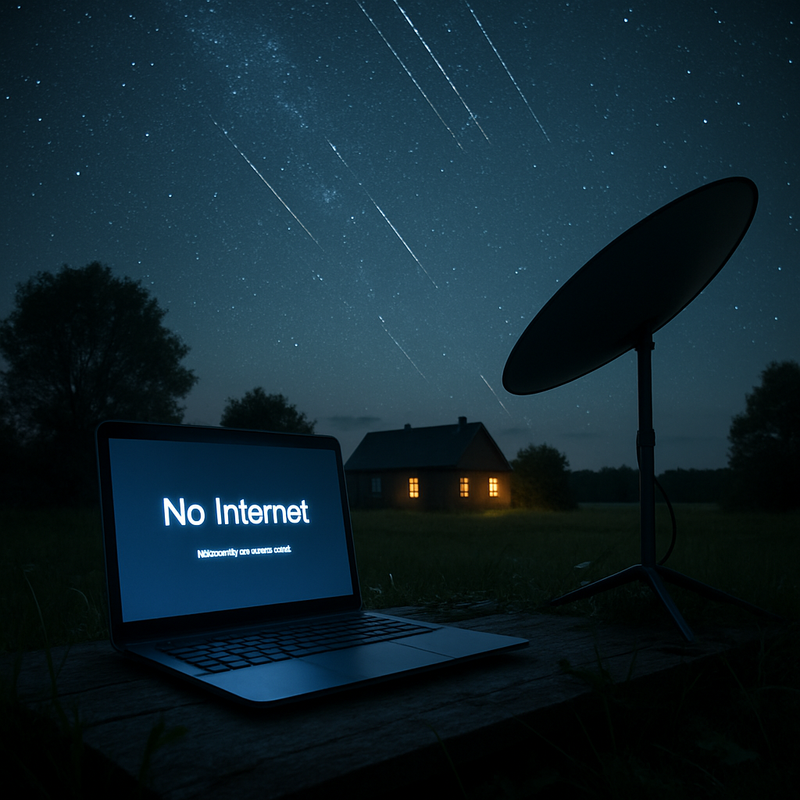
When a Starlink outage occurs, users experience loss of internet connectivity which can range from mere minutes to several hours. These outages can be influenced by a variety of factors, including but not limited to: solar storms, which can interfere with satellite operation; signal obstruction from natural barriers like trees or buildings; and even the satellites' positioning and orbital mechanics. Here’s a breakdown of some common reasons behind the downtime:
Solar Storms: High-energy particles from the sun can disrupt the electronic systems onboard satellites. Such solar storms can lead not only to temporary outages but can potentially damage the hardware, causing long-term interruptions.
Signal Obstruction: Since Starlink relies on line-of-sight for optimal connectivity, any obstruction by physical barriers can lead to signal degradation or complete loss. This is particularly a problem in densely wooded areas or urban locales with high-rise buildings.
Hardware Failures: Though the technology is robust, it’s subject to wear and tear as well as manufacturing flaws. Hardware issues, both in consumer-ground equipment and the satellites themselves, can prompt unexpected interruptions.
User Demand: Overwhelming system demand, especially during peak usage, can also lead to service degradation, as the network struggles to accommodate a higher load than it may be capable of handling efficiently.
During a Starlink outage, the repercussions can range from minor annoyances for individual users doing daily tasks online to more severe consequences for businesses operating remotely or services dependent on continuous internet access. Emergency services, telemedicine, and remote monitoring of critical infrastructure are among the sectors that can be adversely affected during an outage, emphasizing the importance of reliable, redundant systems.
To address and mitigate such outages, Starlink frequently updates its software and adjusts its network protocols. Additionally, the design and deployment of additional satellites aim to provide more robust coverage and minimize potential blind spots and connectivity challenges. What can users do during an outage? The primary step is to check real-time outage reports and status updates provided by Starlink on their official platforms or via third-party outage tracking services. These sources can offer insights into the scope and estimated duration of the outage. It's advisable to have alternative internet arrangements, particularly if your livelihood or critical activities depend heavily on uninterrupted internet access.
As Starlink expands its constellation with more launches, the geographical spread and technological infrastructure improve, which are anticipated to make outages less frequent and less disruptive. Moreover, ongoing advancements in satellite technology, like more sophisticated onboard navigation and more durable components, also contribute to reducing the likelihood and duration of outages.
For users looking to optimize their Starlink experience to mitigate the impact of potential outages, here are a few tips:
- Anticipate Blockages: Regularly inspect the area around your satellite dish to ensure it remains clear of any new obstructions that might appear, be it growing tree branches or new construction.
- Maintain Equipment: Keep the satellite dish and associated hardware in good condition. This includes checking for and resolving any physical damages or misalignments of the dish.
- Software Updates: Ensure your terminal is set to automatically update its software so that you always have the latest fixes and improvements.
In sum, while Starlink has transformed satellite internet into a more viable and competitive option against traditional broadband, the technology is not foolproof and requires ongoing enhancements and user vigilance to tackle the challenges posed by outages.

The future of satellite internet looks promising, with rapid technological advancements poised to further ameliorate connectivity issues. As we move towards a more globally connected future, understanding and preparing for these outages will help minimize their impact, ensuring that users can rely on stable and efficient internet service.
